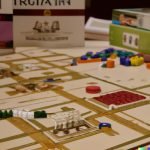The game of life classic kids board games has been a staple in family game nights for generations. From its humble beginnings to its enduring legacy, The Game of Life has captured the hearts and minds of players young and old. In this article, we will take a deep dive into the history of this beloved board game, exploring its origins, evolution, and educational value.
We will start by delving into the fascinating history of The Game of Life, tracing its roots back to its creators and the different versions that have been released over the years. From its inception to the present day, we’ll uncover how this game has evolved and adapted to stay relevant in an ever-changing world of board games.
Next, we will provide a comprehensive guide on how to play The Game of Life, offering a step-by-step overview of setting up the game, understanding the rules and objectives, and mastering the gameplay mechanics. Whether you’re a seasoned player or a newbie looking to learn more about this classic game, our guide will help you navigate through the twists and turns of The Game of Life.
Finally, we will discuss the educational benefits of playing The Game of Life. We’ll explore how this game teaches kids valuable lessons about money management, decision-making, and experiencing consequences based on their choices. As we journey through the history and impact of The Game of Life, it’s clear that this timeless classic is much more than just a fun pastime – it’s also a valuable tool for learning life skills in an engaging way.
How to Play the Game of Life
The Game of Life is a classic board game that has been enjoyed by kids and families for generations. The game was first created in 1860 by Milton Bradley, and it has since evolved to include different versions and editions. The objective of the game is simple: players must navigate through different life events, making choices that will ultimately determine their success and happiness in the game.
To set up the game, each player must choose a car-shaped game piece and place it on the starting space. Players take turns spinning the iconic spinner and moving their game piece along the board according to the number they land on. Throughout the game, players will encounter various life events, such as getting married, buying a house, or having children. These events require players to make decisions that will impact their finances and overall success in the game.
The ultimate goal of The Game of Life is to amass the most wealth and reach retirement with the highest net worth. This can be achieved by making smart financial decisions, taking risks when necessary, and making strategic choices throughout the game. The Game of Life teaches kids valuable lessons about money management, risk-taking, and decision-making while providing an entertaining gameplay experience for players of all ages.
Educational Value
The Game of Life has been a beloved classic kids’ board game for generations, and one of its standout features is the educational value it offers to young players. One of the key benefits of playing The Game of Life is that it teaches kids important life skills, such as money management, decision-making, and the consequences of their choices.
As children play through the game, they encounter various scenarios that require them to make decisions about their career, finances, and lifestyle. These decisions directly impact their progress in the game, allowing them to experience firsthand the outcomes of different choices.
Money management is a crucial aspect of The Game of Life, as players must navigate through financial challenges such as paying bills, making investments, and budgeting for unexpected expenses. Through these in-game experiences, kids learn about the importance of saving money, making wise financial decisions, and planning for the future.
Additionally, The Game of Life also introduces children to the concept of risk versus reward, as they weigh the potential benefits and drawbacks of different paths they can take in the game.
Decision-making is another skill that kids develop while playing The Game of Life. They must consider various factors when making choices in the game, such as their career path, whether to pursue higher education or enter the workforce immediately after high school graduation, and how to balance work and family life.
This encourages critical thinking and strategic planning as they evaluate their options and anticipate the potential outcomes of their decisions. By allowing kids to make these choices in a safe and controlled environment like a board game, they can learn valuable decision-making skills that are applicable to real-life situations.
Educational Value: Discussing Educational Benefits
Fun Facts and Trivia
The Game of Life is a beloved classic board game that has captured the hearts of kids and families for generations. As such, it’s no surprise that there are many interesting tidbits and trivia surrounding this iconic game. From the game pieces to its development, here are some fun facts and trivia about The Game of Life.
Fun Facts About the Game Pieces
One of the most recognizable aspects of The Game of Life is its distinct game pieces. From cars to pegs representing family members, each piece has its own charm. Did you know that the original version of the game featured wooden pegs as game pieces? It wasn’t until later versions that the plastic cars we now associate with the game were introduced.
The Iconic Spinner
The spinner in The Game of Life is an essential part of gameplay, determining how far players can move and what events they may encounter on their journey. Interestingly, the original version of the game used a teetotum-a six-sided spinning top-instead of the familiar spinner we know today. It wasn’t until 1985 that Milton Bradley Company replaced the teetotum with the modern spinner design.
Little-Known Trivia About the Game’s Development
The Game of Life has undergone several iterations since it was first created in 1860 by Milton Bradley, reflecting changes in society and pop culture over time. However, one little-known fact about its development is that it was originally intended to be a morality-themed game called “The Checkered Game of Life” before evolving into its present form as a lighthearted reflection on different life paths and choices.
With these fascinating fun facts and trivia in mind, it’s clear that The Game of Life has an enduring appeal that extends beyond just gameplay. Its iconic elements and intriguing history have secured its place as a timeless classic in the world of board games.
The Game of Life vs Other Classic Board Games
The Game of Life has been a beloved classic kids’ board game for generations, but how does it compare to other timeless favorites? Let’s take a look at some of the key differences and unique features that set The Game of Life apart from other classic board games:
- Monopoly: Unlike Monopoly, which focuses on buying and trading properties, The Game of Life simulates the journey through various life stages, including education, career, and family. While Monopoly teaches players about financial strategy and negotiation, The Game of Life emphasizes decision-making and the consequences of life choices.
- Candy Land: In contrast to the whimsical and luck-based gameplay of Candy Land, The Game of Life incorporates elements of strategy and planning as players navigate different paths in life. The educational value of The Game of Life extends beyond simple luck to include budgeting, long-term planning, and weighing different options.
- Chutes and Ladders: While Chutes and Ladders is a simple game based on luck and counting spaces on the board, The Game of Life requires players to make strategic decisions at every turn. Additionally, The Game of Life reflects real-life situations more closely by introducing players to concepts such as insurance, taxes, and investment opportunities.
Each classic kids’ board game offers its own set of unique features and gameplay mechanics. However, what sets The Game of Life apart is its blend of educational value with engaging decision-making and life events simulation. As a result, The Game of Life stands out as a timeless favorite that continues to capture the imagination of kids and families around the world.
Tips and Strategies
When it comes to playing The Game of Life, having a winning strategy can make all the difference. Whether you’re focused on amassing wealth or prioritizing experiences, there are several tips and strategies to keep in mind as you navigate the ups and downs of life in the game.
Here are some tips for winning The Game of Life:
- Manage your finances wisely: Just like in real life, managing your finances is crucial in The Game of Life. Make strategic decisions about investing in a good education or pursuing a high-paying career to set yourself up for success later in the game.
- Prioritize experiences over wealth: While accumulating wealth can be important, don’t forget to prioritize experiences and relationships along the way. Sometimes taking a lower-paying job that offers more experiences can lead to a richer and more fulfilling life in the game.
- Make calculated decisions: Throughout the game, you will be faced with various choices – from buying a home to starting a family. Consider the potential long-term consequences of each decision before making your move.
- Navigate life events strategically: From getting married to facing unexpected expenses, life events can significantly impact your path in The Game of Life. Be prepared to adapt and make strategic choices when faced with these moments.
By keeping these tips and strategies in mind, you’ll be better equipped to navigate the twists and turns of The Game of Life and increase your chances of coming out on top. After all, just like in real life, making smart decisions and managing your resources are key elements to achieving success in this classic board game.
The Game of Life in Pop Culture
The Game of Life has not only been a staple in the world of board games but has also made appearances in popular culture, further solidifying its enduring popularity. From movies to TV shows to literature, The Game of Life has left an indelible mark on popular culture.
Movies
One notable appearance of The Game of Life in movies is in the 2012 film “Silver Linings Playbook.” In this romantic comedy-drama, the characters played by Jennifer Lawrence and Bradley Cooper are seen playing The Game of Life, which becomes a symbolic representation of finding joy and purpose in life despite its challenges.
Another mention can be found in the award-winning animated film “Ratatouille.” In this movie, one of the characters likens life to a game of chance and illustrates it using The Game of Life as a metaphor. This use showcases how the game has been integrated into storytelling and serves as a relatable symbol for life’s unpredictability.
TV Shows
The Game of Life has been referenced on numerous occasions in popular TV series. In the beloved show “Friends,” characters are seen playing the game while dealing with their own personal struggles, reflecting on the game’s theme of navigating through life’s ups and downs.
Additionally, The Game of Life has been parodied or featured in episodes across various genres, showcasing its timeless appeal and recognition among audiences.
Literature
Even within literature, The Game of Life has left its mark. References to the game can be found in novels, where it is used as both a narrative device and as an allegory for various elements such as fate, destiny, and decision-making.
The continued presence of The Game of Life across different forms of media is a testament to its enduring popularity and cultural significance. Its depiction provides audiences with relatable scenarios rooted in everyday life experiences – making it more than just a board game, but an embodiment of life itself.
The Legacy of the Game of Life
In conclusion, The Game of Life has left a lasting impact on the world of board games and continues to hold a special place in the hearts of generations of kids and families. Since its creation in 1860, the game has undergone various iterations and adaptations, solidifying its status as a classic that has withstood the test of time.
From its humble beginnings as The Checkered Game of Life to its modern versions featuring different life stages and careers, The Game of Life continues to captivate players with its blend of luck, strategy, and life lessons.
The educational value of The Game of Life cannot be overstated, as it serves as a valuable tool for teaching kids about money management, decision-making, and the consequences of their choices. By simulating real-life scenarios through gameplay, the game provides a platform for learning important life skills in a fun and engaging manner.
Additionally, its presence in popular culture, including appearances in movies, TV shows, literature, and even video games, further solidifies its status as an enduring classic that has transcended generations.
As such, The Game of Life’s legacy is not just limited to the world of board games; it extends to the impact it has had on players’ lives over the years. Its ability to bring families and friends together for hours of entertainment and laughter is truly remarkable. Whether played for pure enjoyment or as a tool for learning valuable life lessons, The Game of Life will continue to be cherished by many for years to come.
Frequently Asked Questions
What Are 5 Classic Family Games?
Classic family games include Monopoly, Scrabble, Uno, Clue, and Pictionary. These timeless games are popular among families for their ability to bring everyone together for some friendly competition and fun.
Can a 5 Year Old Play Game of Life?
A 5-year-old can definitely play the Game of Life, but they may need some assistance from an older player to understand the rules and handle the game pieces. The colorful board and simple gameplay make it accessible for younger children to join in on the fun.
Is the Game of Life Good for Kids?
The Game of Life can be a good game for kids as it teaches them about decision-making, money management, and the concept of cause and effect in a fun and engaging way. It also provides opportunities for family bonding and friendly competition while introducing important life skills to kids in an entertaining manner.

I love playing all kinds of games – from classics like Monopoly to modern favourites like Ticket to Ride.
I created this blog as a way to share my love of board games with others, and provide information on the latest releases and news in the industry.





